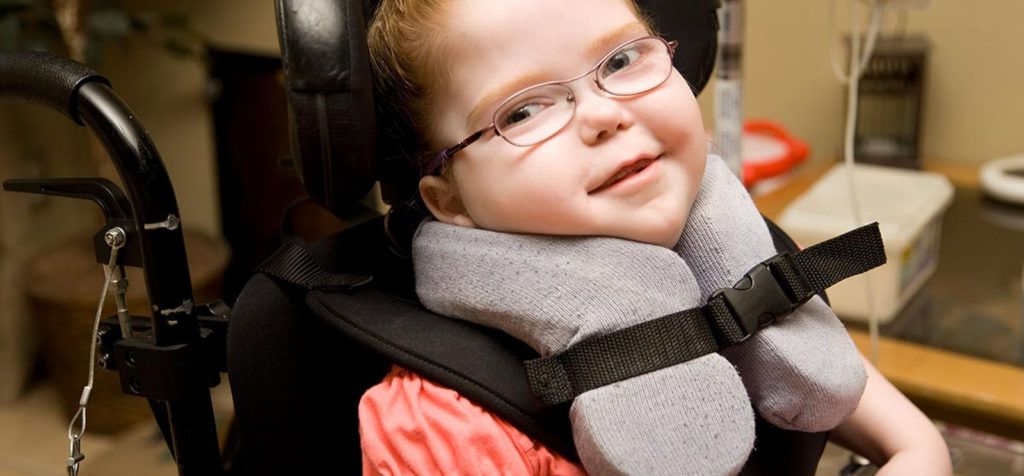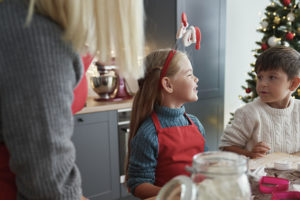Speech disorders are common among those with cerebral palsy.
Some children with cerebral palsy have difficulty controlling the muscles in their face, throat, neck and head. This can lead to troubles with speech, chewing and swallowing. It can also cause drooling and affect overall ability to interact and learn. Those who also have difficulty hearing may have a hard time understanding spoken language.
Speech and language therapy seek to improve a child’s speech and communication by strengthening the muscles used for speech, increasing oral motor skills and by improving their understanding of speech and language. It also can help with swallowing disorders, like dysphagia.
Benefits of speech therapy
Speech therapy can be very beneficial for children with cerebral palsy.
Children with cerebral palsy who have difficulty eating, chewing and swallowing may also have a problem with normal growth and maintaining a healthy weight. Speech therapy can help with these issues, making it easier for the child to get the proper nutrition and hydration they need. This can improve their overall quality of life and increase their independence.
Speech therapy can help with the following:
- Articulation
- Pronunciation
- Fluency/stuttering
- Sound and word formation
- Listening
- Pitch
- Language and vocabulary development
- Speech volume
- Word comprehension
- Word-object association
- Breath support and control
- Chewing
- Swallowing
- Speech muscle coordination and strength
The benefits of speech therapy go beyond improving a child’s ability to understand and use language. Communication is very important to other areas of development, like cognitive development and social and emotional development. As the child learns to better express themselves, the benefits can be seen in many other aspects of their life and development.
Speech therapy is beneficial because it can help:
- Encourage learning and education
- Improve ability to problem-solve
- Increase independence
- Improve literacy
- Improve ability to express thoughts and ideas
- Improve socialization
- Boost self-esteem
- Reduce shyness
- Improve quality of life
- Improve swallowing function and safety
Children with different types of cerebral palsy may face communication problems, which speech therapy can help treat.
Different speech issues as they relate to each different type of cerebral palsy include:
Spastic – Children with spastic cerebral palsy usually struggle with slow, imprecise oral movements that require a lot of effort. Their speech often sounds slurred and their voice sounds tight or hoarse.
Athetoid – Those who have athetoid cerebral palsy often have a hard time controlling their face and tongue muscles. They also have difficulty controlling their breathing and vocal chords and have problems with eating and drooling.
Ataxic – “Scanning” speech, which is speaking in a monotone voice with breathy sounds, is common among children with ataxic cerebral palsy. Their speech is often marked by pauses and accelerations and they also have difficulty swallowing.
What to expect in speech therapy
Speech therapy is different for every child with cerebral palsy. During the first session, the speech therapist will perform an initial assessment of the child’s physical and cognitive functioning. This assessment may include an examination of the child’s case history, an oral cavity exam, audiology tests, articulation assessments, language and fluency assessments and cognitive assessments.
After the original assessments, the speech therapist can then determine the child’s diagnosis and create a treatment plan. Treatment usually consists of exercises tailored to the child’s specific struggles with communication or swallowing. Assistive communication devices and sign language are often used to help the child express himself or herself. These are especially helpful in more severe cases, as when children are completely nonverbal.
Exercises used in speech therapy
Many different exercises are used in speech therapy. Each child’s treatment plan will be different based on their individual challenges and needs.
Some examples of common exercises for speech therapy include:
Articulation therapy – Using language cards to help focus on specific sounds; encouraging children to make sounds while looking in the mirror to help them understand how their mouth moves.
Blowing exercises – Blowing bubbles or a whistle to train the mouth muscles to produce certain sounds and strengthen abdominals for breath control.
Breathing exercises – Working on inhalation and exhalation to strengthen the diaphragm.
Jaw exercises – Eating foods that require extra chewing, like celery, apples and carrots, to strengthen jaw muscles; practicing opening and shutting their mouth using only the jaw muscles while someone else holds their chin.
Language and word association – Using flashcards with different words and sounds written on them; putting together puzzle pieces with words that go together, like “sock” and “shoe,” “toothbrush” and “toothpaste,” and “bat” and “ball.”
Lip exercises – Squeezing their lips around a lollipop to increase strength; pursing their lips to improve lip extension.
Swallowing exercises – Doing an “effortful swallow,” which is collecting liquid or saliva in the mouth and swallowing it in one gulp. This helps prevent food and fluids from falling into the airway. Doing a “masako maneuver,” which strengthens the muscles in the back of the throat. This is done when the child sticks their tongue out, gently puts pressure on it with their teeth to hold in place and then practices swallowing.
Tongue exercises – Strengthening the tongue by sticking it out and pushing it against a tongue depressor or spoon for seconds at a time.
Equipment used in speech therapy
Speech therapists use a variety of different tools to help children with cerebral palsy improve or overcome their communication struggles. Assistive technology, or assistive devices, are also used as communication aids, especially for nonverbal children.
Tools
Tools commonly used in speech therapy include:
- Placement tools (correct tongue positioning for certain sounds)
- Oral sensory chews
- Straws
- Tongue depressors
- Picture boards
- Books
- Flashcards
- Dry erase boards
- Flip charts
Article: CerebralGuide




